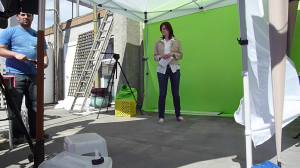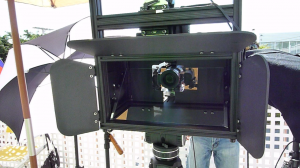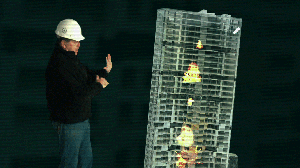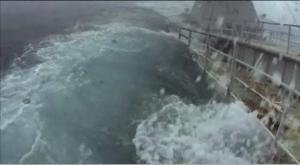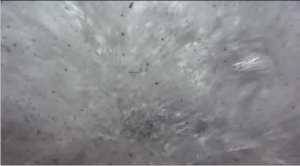Shooting a 3D documentary: run and gun data management
Shooting our first 3D documentary’s not only going to change the way we capture content in the field, it’s also going to drastically change the way we store it.
Not only will this be the first show that my crew shoots tapeless, they’ll also have to contend with twice the amount of footage.
And if they lose any of it, it could be a huge disaster (think: Blowdown without the implosion. Yikes).
So we’re looking into a system that will allow us to move footage from camera/nano3D compact flash cards to a storage unit during the day, the transfer it into a mega conduit each evening.
Our data journey would start with ShotPut Pro. This copy utility application automatically copies and verifies all transfers off of flash cards. It can also copy multiple cards to multiple hard disks at the same time.
We’d use ShotPut Pro to transfer our footage to a G RAID mini. Using its RAID 1 setting, the crew would put two copies of everything onto the mini’s two SATA drives. This redundancy means that if for some reason we lose one drive, we won’t lose the farm.
Each G RAID mini stores up to 1 TB of data, so we should be able to carry our footage (up to 500 GB, copied twice) on it until the end of the day (if the crew’s shooting more than that amount, they’re shooting too much!).
Each evening, we’d then transfer the footage from the G RAID mini to a G SAFE. Each of these storage units takes up to 2 TB of data, and only stores RAID 1 (mirrored), which means two copies stored no matter what.
The data journey would end when both 7200 RPM SATA II drives are removed and shipped back to the production house separately, in case one gets lost in transit.
Approximate cost: $100 for ShotPut Pro, $300 for the G RAID mini, $700 for the G SAFE with two drives (ie. the first 2 TB of storage).
After that, we’ll be buying drives just like we bought tapes – I’m interested to see how costs compare out the other end.
And another first – to keep track of audio tracks, locations and dates (in lieu of the tape, sticker and marker technique) we’ll be using an electronic slate, courtesy of the iPad.

